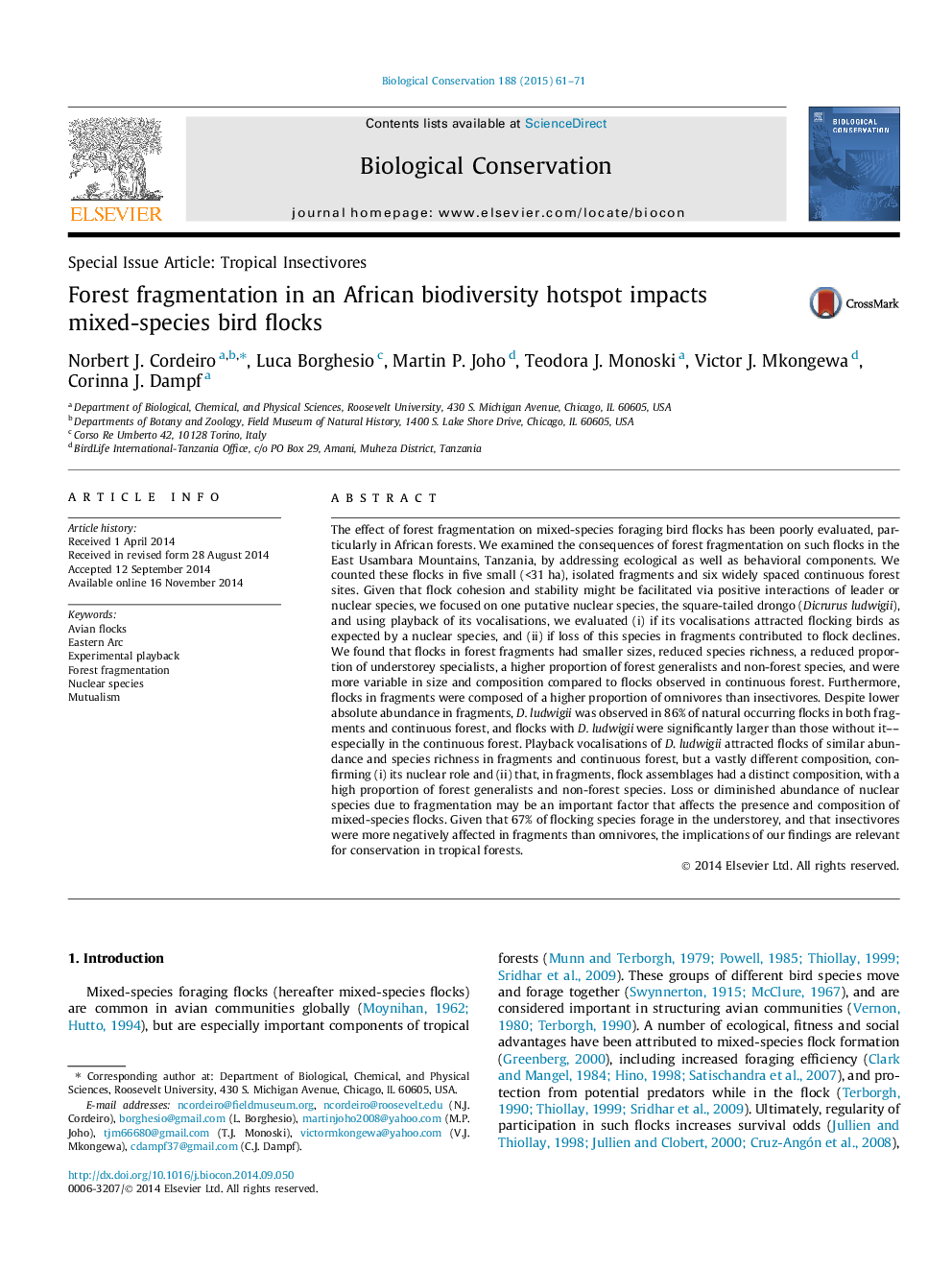| کد مقاله | کد نشریه | سال انتشار | مقاله انگلیسی | نسخه تمام متن |
|---|---|---|---|---|
| 4385041 | 1617913 | 2015 | 11 صفحه PDF | دانلود رایگان |
• Forest fragmentation negatively affects mixed-species bird flocks in Tanzania.
• Flocks in fragments had smaller sizes and few species, especially understorey insectivores.
• Flocks in forest fragments were more variable in size and composition.
• Experimental playback demonstrated that Dicrurus ludwigii has a nuclear role.
• Loss of nuclear species in fragments reduces flock stability.
The effect of forest fragmentation on mixed-species foraging bird flocks has been poorly evaluated, particularly in African forests. We examined the consequences of forest fragmentation on such flocks in the East Usambara Mountains, Tanzania, by addressing ecological as well as behavioral components. We counted these flocks in five small (<31 ha), isolated fragments and six widely spaced continuous forest sites. Given that flock cohesion and stability might be facilitated via positive interactions of leader or nuclear species, we focused on one putative nuclear species, the square-tailed drongo (Dicrurus ludwigii), and using playback of its vocalisations, we evaluated (i) if its vocalisations attracted flocking birds as expected by a nuclear species, and (ii) if loss of this species in fragments contributed to flock declines. We found that flocks in forest fragments had smaller sizes, reduced species richness, a reduced proportion of understorey specialists, a higher proportion of forest generalists and non-forest species, and were more variable in size and composition compared to flocks observed in continuous forest. Furthermore, flocks in fragments were composed of a higher proportion of omnivores than insectivores. Despite lower absolute abundance in fragments, D. ludwigii was observed in 86% of natural occurring flocks in both fragments and continuous forest, and flocks with D. ludwigii were significantly larger than those without it––especially in the continuous forest. Playback vocalisations of D. ludwigii attracted flocks of similar abundance and species richness in fragments and continuous forest, but a vastly different composition, confirming (i) its nuclear role and (ii) that, in fragments, flock assemblages had a distinct composition, with a high proportion of forest generalists and non-forest species. Loss or diminished abundance of nuclear species due to fragmentation may be an important factor that affects the presence and composition of mixed-species flocks. Given that 67% of flocking species forage in the understorey, and that insectivores were more negatively affected in fragments than omnivores, the implications of our findings are relevant for conservation in tropical forests.
Journal: Biological Conservation - Volume 188, August 2015, Pages 61–71
